5 Key Insights on Top POS Companies for Market Analysts
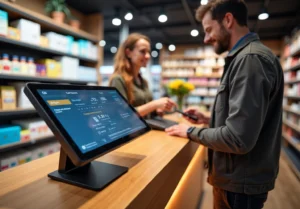
5 Key Insights on Top POS Companies for Market Analysts
Overview
The article presents five key insights for market analysts regarding leading POS companies, concentrating on essential features, pricing, and performance metrics that influence their selection. Understanding each company's unique offerings is crucial. For instance,
- Square is recognized for its affordability and user-friendliness.
- Shopify excels in integration capabilities.
- Toast specializes in solutions tailored for restaurants.
These insights collectively guide analysts in recommending the most suitable POS solutions for diverse business needs.
What specific features do these companies offer that could impact your decision-making process? By analyzing these attributes, analysts can better align POS solutions with the varying requirements of businesses. This approach not only highlights the advantages of each solution but also emphasizes the benefits that can be reaped by selecting the right system. Ultimately, these insights serve as a valuable resource for ensuring informed recommendations in the ever-evolving market landscape.
Introduction
Understanding the intricate landscape of Point of Sale (POS) systems is essential for market analysts navigating the rapidly evolving retail technology sector. The global POS market is projected to soar to $181 billion by 2030, highlighting the significance of this sector. Insights gleaned from a comparative analysis of leading POS companies can significantly enhance operational efficiency and decision-making for businesses across various industries.
As the demand for advanced features and seamless integrations grows, analysts must consider:
- How can they discern which POS solutions truly deliver value and performance amidst a sea of options?
Understanding Point of Sale (POS) Systems
Point of Sale (POS) setups represent integrated hardware and software solutions that facilitate sales transactions in retail and service environments. These POS companies empower businesses to process payments, manage inventory, and analyze sales data in real-time. Contemporary POS solutions often incorporate features such as customer relationship management (CRM), employee management, and reporting tools, rendering them vital for operational efficiency. Understanding the essential features of POS solutions is crucial for market analysts, as it enables them to assess how different platforms can meet the diverse requirements of enterprises across multiple sectors, from retail to hospitality.
The realistic life expectancy of a POS device ranges from 5 to 7 years, an important consideration for businesses planning upgrades. In 2023, the global retail POS market reached $22.26 billion, with a projected compound annual growth rate (CAGR) of 8% through 2030, highlighting the increasing reliance on these solutions. Furthermore, 68% of restaurant professionals regularly review sales reports, emphasizing the significance of data analysis in decision-making processes.
Industry leaders have noted that the evolution of POS technology is marked by a shift towards cloud-based solutions, which accounted for over 60% of recent acquisitions. This trend reflects a broader movement towards digital transformation, with businesses increasingly prioritizing features that enhance data accessibility and operational flexibility. For instance, 71% of restaurateurs emphasize the importance of cloud functionality when selecting POS solutions, underscoring the necessity for real-time data management.
Real-world examples illustrate the effectiveness of POS tools in inventory management and sales analysis. Clover and Square have been recognized as POS companies for their robust reporting capabilities, enabling companies to efficiently monitor sales performance and optimize inventory levels. Additionally, the average transaction value per user for mobile POS payments is $2,100 annually worldwide, showcasing the financial impact of mobile solutions. As the POS landscape continues to evolve, market analysts must stay informed about these trends and the essential role POS solutions play in fostering business success.
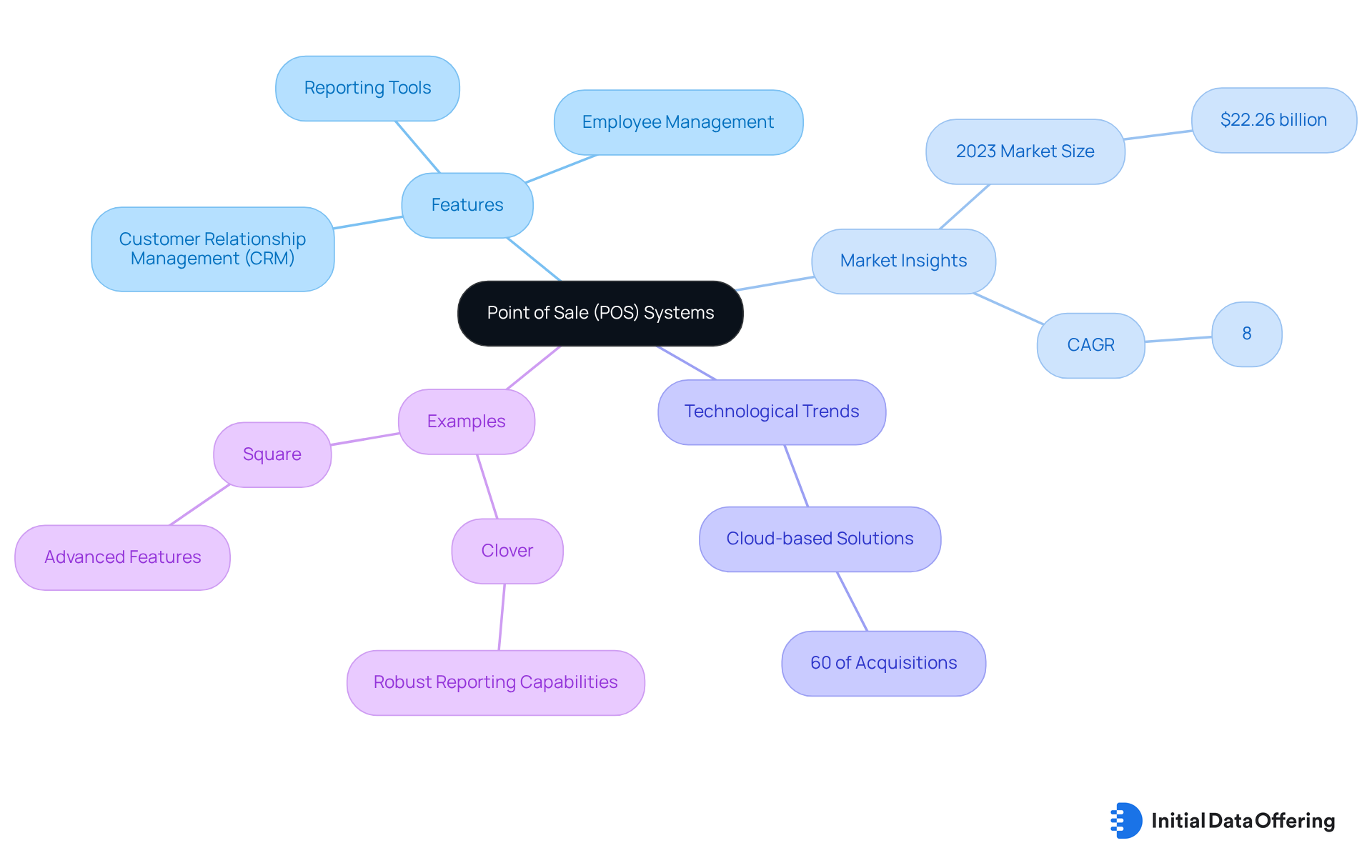
Comparison Criteria: Features, Pricing, and Performance
When evaluating POS companies, several essential criteria must be considered:
-
Features: Key functionalities such as payment processing capabilities, inventory management, reporting tools, and integration with other software are crucial. A comprehensive feature set can significantly improve operational efficiency for POS companies, with features representing 25% of the evaluation criteria for their solutions. Significantly, 69% of restaurant owners emphasize connections with other platforms when selecting new POS companies, highlighting the importance of this aspect.
-
Pricing: Understanding the cost structure—including upfront costs, monthly fees, and transaction fees—is vital for effective budgeting. For instance, Clover POS starts at $14.95 per month, while Toast's pricing begins at $69 monthly. Transaction fees usually vary from 1.5% to 3.5%, based on the provider and payment method. This variance offers a clearer understanding of the cost implications linked to various POS companies, enabling businesses to make informed financial decisions.
-
Performance: This includes the reliability of the infrastructure, transaction speed, and customer support. High-performance setups in POS companies reduce downtime and enhance customer satisfaction. For instance, POS companies that utilize Toast's mobile ordering interface reported a 9% rise in average check size, illustrating the positive impact of effective solutions on revenue. Furthermore, customer support constitutes 15% of the evaluation criteria, emphasizing its significance in the overall assessment of POS solutions.
By thoroughly assessing these criteria, market analysts can identify which POS companies offer the best value and functionality suited to their particular needs. How can these insights be applied to enhance your own business operations?
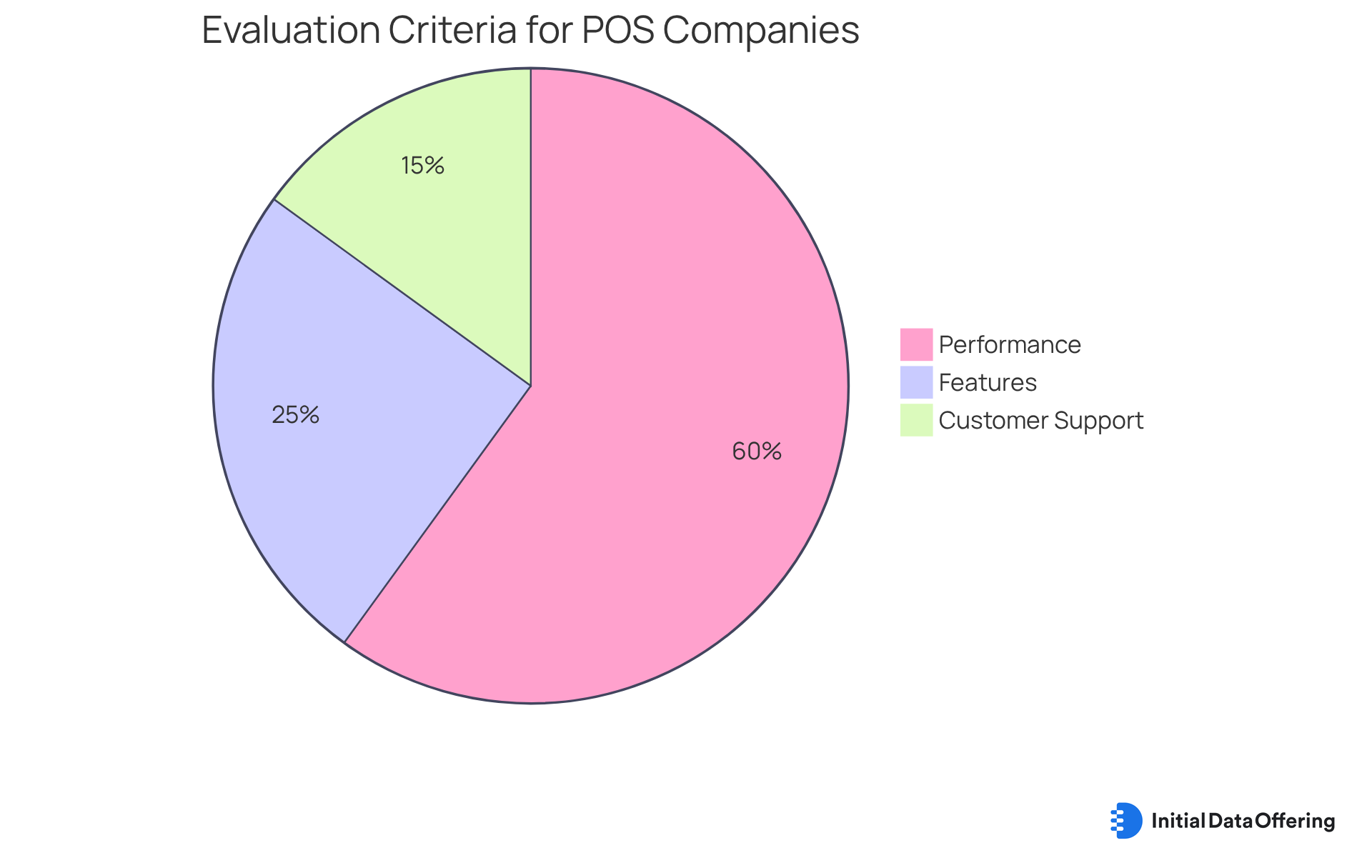
In-Depth Analysis of the Top 5 POS Companies
-
Square: Recognized for its user-friendly interface and competitive pricing, Square presents a comprehensive suite of features, including inventory management and sales reporting. The transparent pricing model, which includes no monthly fees, makes it particularly advantageous for small enterprises. However, it's important to note that transaction fees can accumulate for high-volume sellers. Notably, Square features a built-in payment processor, simplifying transactions for users and enhancing overall efficiency.
-
Shopify POS: This system integrates seamlessly with Shopify's e-commerce platform, establishing it as a strong choice for businesses operating both online and in physical locations. It offers robust inventory management and customer tracking capabilities. Although its pricing may surpass that of competitors, especially for advanced options, the significant integration advantages cannot be overlooked. Furthermore, Shopify POS includes integrated shipping and delivery capabilities, augmenting its appeal for e-commerce-focused businesses.
-
Lightspeed: Lightspeed is particularly favored by retailers and restaurants due to its advanced inventory management features and customizable reporting tools. While it provides a comprehensive range of capabilities, its costs are relatively high, which may deter smaller enterprises. The sophisticated inventory functionalities empower businesses to manage complex inventory needs efficiently, ensuring operational effectiveness.
-
Clover: Clover offers a flexible POS solution with a variety of hardware options and an extensive range of customizable apps. Its pricing structure can be intricate, with various fees that may cause confusion among users. Nonetheless, its adaptability makes it suitable for diverse types of enterprises. Additionally, Clover's user administration features assist in tracking employee performance, thereby enhancing value for organizations.
-
Toast: Specifically tailored for the restaurant industry, Toast provides features designed for food service, such as menu management and online ordering. Its subscription-based pricing can be advantageous for restaurants seeking predictable costs. However, it may not be the best fit for non-food retail businesses. The collaboration between SoundHound and Toast illustrates how this platform enhances customer service through innovative voice-ordering features.
This analysis highlights the distinctive strengths and potential limitations of each POS companies' solution, providing market analysts with the insights necessary to recommend the best options for their clients. Moreover, with the global market for POS companies projected to reach $181 billion by 2030, understanding these frameworks is crucial for navigating the evolving landscape of retail technology.
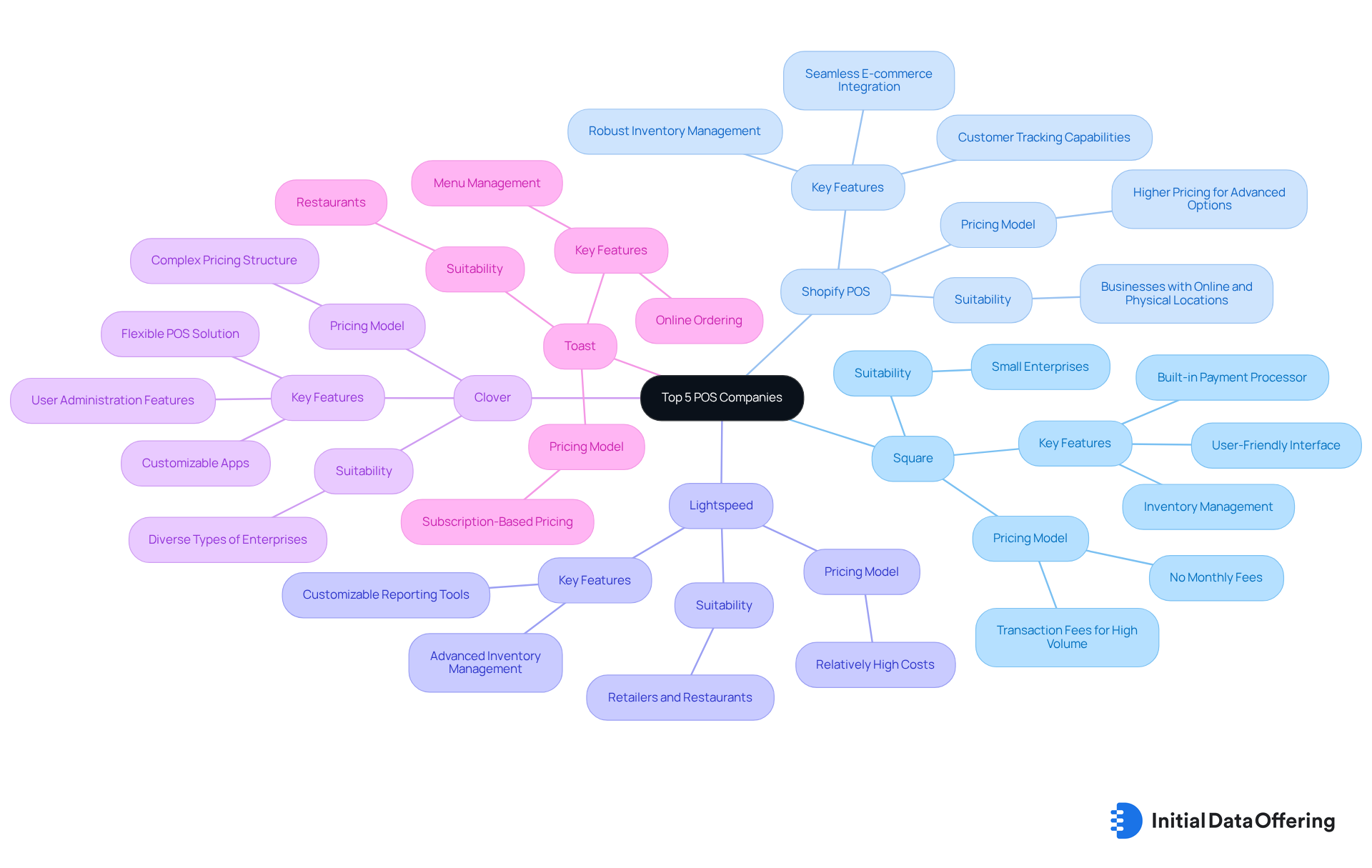
Summary of Key Insights and Recommendations
In summary, selecting the right POS companies is essential for aligning with specific organizational needs and operational requirements. For small enterprises that prioritize affordability and user-friendliness, Square stands out as an excellent choice. Its AI-driven inventory management software automatically predicts stock requirements, enhancing operational efficiency. On the other hand, Shopify POS is ideal for businesses with both online and physical presences, as it seamlessly integrates sales across channels. This integration is increasingly important, given that nearly 1 in 4 individuals worldwide are expected to use mobile POS payments in 2023. For larger retailers, Lightspeed offers sophisticated options, while Clover provides adaptability suitable for various business types. Additionally, Toast is specifically tailored for the restaurant industry, significantly enhancing operational efficiency and customer service, especially as 82% of restaurants have recently faced staffing shortages.
Market analysts should evaluate the distinct characteristics, pricing models, and performance indicators of each platform to recommend the most suitable solutions among POS companies for their clients. Here’s a quick overview of the pros and cons of each system:
-
Square:
- Pros: Affordable, user-friendly, AI-based inventory management.
- Cons: Limited advanced functionalities in comparison to larger systems.
-
Shopify POS:
- Pros: Excellent for omnichannel sales, integrates well with e-commerce.
- Cons: May be more costly for small enterprises.
-
Lightspeed:
- Pros: Advanced features for larger retailers, strong analytics.
- Cons: Higher cost may not be suitable for all small enterprises.
-
Clover:
- Pros: Flexible for various business types, customizable.
- Cons: Complexity may overwhelm some users.
-
Toast:
- Pros: Tailored for restaurants, enhances service efficiency.
- Cons: Primarily focused on the food service industry.
This strategic alignment empowers businesses to leverage technology effectively, ultimately enhancing operations and improving customer experiences.
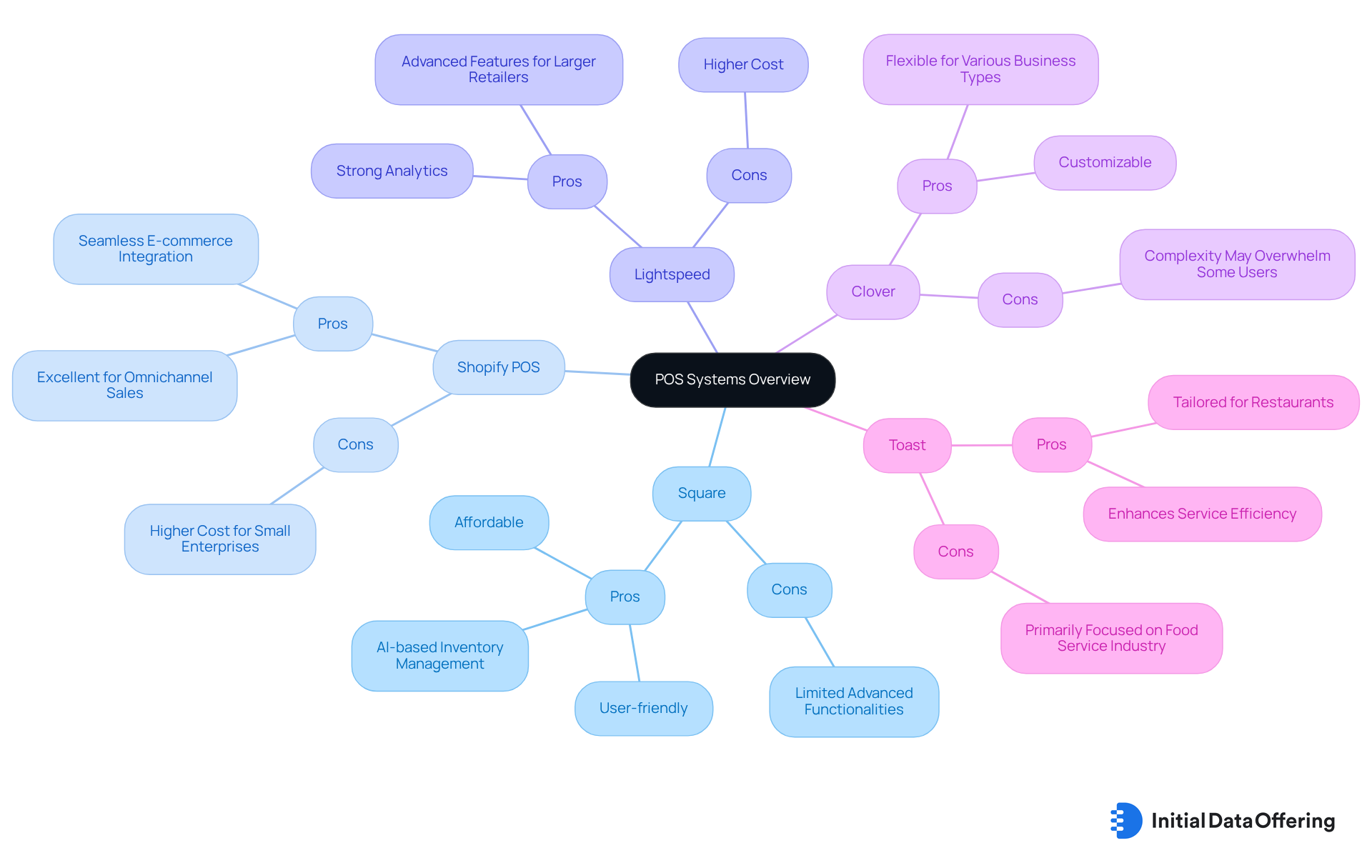
Conclusion
Selecting the right Point of Sale (POS) system is a pivotal decision for businesses aiming to enhance operational efficiency and customer satisfaction. Understanding the diverse offerings of leading POS companies is crucial; market analysts must consider features, pricing, and performance to align solutions with specific business needs.
Each POS provider brings unique strengths to the table.
- Square appeals to small businesses with its affordability and user-friendly interface.
- In contrast, Shopify POS excels in omnichannel integration, making it ideal for businesses operating both online and offline.
- Lightspeed caters to larger retailers with advanced capabilities, while Clover offers flexibility across various business types.
- Lastly, Toast is tailored specifically for the restaurant sector.
These distinctions highlight the necessity for a thorough evaluation of each system's characteristics to ensure the best fit for organizational requirements.
As the landscape of POS technology continues to evolve, the significance of these systems cannot be overstated. Businesses are encouraged to leverage these insights to make informed decisions that not only optimize their operations but also enhance customer experiences. By staying abreast of current trends and understanding the key functionalities of top POS providers, market analysts can play a crucial role in guiding enterprises towards effective technological solutions that drive success in an increasingly competitive environment.
Frequently Asked Questions
What are Point of Sale (POS) systems?
Point of Sale (POS) systems are integrated hardware and software solutions that facilitate sales transactions in retail and service environments, allowing businesses to process payments, manage inventory, and analyze sales data in real-time.
What features do modern POS solutions typically include?
Modern POS solutions often include features such as customer relationship management (CRM), employee management, reporting tools, and inventory management, which are vital for operational efficiency.
What is the typical life expectancy of a POS device?
The realistic life expectancy of a POS device ranges from 5 to 7 years.
What is the current market size of the global retail POS market?
In 2023, the global retail POS market reached $22.26 billion and is projected to grow at a compound annual growth rate (CAGR) of 8% through 2030.
How important is data analysis for restaurant professionals?
A significant 68% of restaurant professionals regularly review sales reports, highlighting the importance of data analysis in decision-making processes.
What trend is currently shaping the evolution of POS technology?
There is a notable shift towards cloud-based POS solutions, which accounted for over 60% of recent acquisitions, reflecting a broader movement towards digital transformation and enhanced data accessibility.
Why is cloud functionality important for restaurateurs when selecting POS solutions?
Cloud functionality is emphasized by 71% of restaurateurs as it enables real-time data management, which is crucial for operational flexibility.
Can you provide examples of effective POS tools?
Clover and Square are recognized for their robust reporting capabilities, which help companies efficiently monitor sales performance and optimize inventory levels.
What is the average transaction value for mobile POS payments?
The average transaction value per user for mobile POS payments is $2,100 annually worldwide.
Why should market analysts stay informed about POS trends?
As the POS landscape continues to evolve, understanding these trends and the essential role of POS solutions is crucial for market analysts to assess how different platforms meet the diverse needs of enterprises across various sectors.